The Gift of South Dakota
Subscriptions to South Dakota Magazine make great gifts!
Subscribe today — 1 year (6 issues) is just $29!
The Art of Gingerbread
Dec 31, 2020
For the January/February 2021 issue of South Dakota Magazine, we talked to Barb Feilmeier, a Mitchell woman who has elevated gingerbread architecture to lofty heights by crafting everything from the grand Victorian Beckwith House in Mitchell to the South Dakota State Capitol out of flour, sugar and spice.
After making gingerbread houses for 50 years, Feilmeier has amassed a wealth of tricks to make the process run smoothly while stretching the bounds of her creativity. One year, that involved making domes for the Corn Palace out of giant Hershey’s Kisses, whittled down to size. Another time, she built a stone wall for an Irish castle out of Rice Krispies bars and rock candy. “I have to do something that I haven’t done before,” she says.
Feilmeier kindly shared photos of gingerbread houses past from her massive scrapbook, as well as her recipe and many tips. Perhaps they will inspire you to think outside the gingerbread house kit next year.
Gingerbread
(Adapted from Family Circle, December 1970)
5 1/2 cups sifted all-purpose flour
1 pinch baking soda
1 teaspoon salt
3 teaspoons cinnamon
2 teaspoons ginger
2 teaspoons cloves
1 teaspoon nutmeg
1 cup shortening
1 cup sugar
1 cup molasses
1 egg
Sift flour, baking soda, salt and spices onto wax paper. In a large bowl, beat shortening and sugar until light and fluffy. Beat in molasses and egg. Stir in flour mixture to make a stiff dough. Chill several hours or overnight, until dough is firm enough to roll.
Line a cookie sheet with aluminum foil and sprinkle with flour. Roll out 1/4 of the dough to 1/8-inch thickness on the foil, covering the whole cookie sheet. Arrange as many pattern pieces as possible, allowing at least 1/2 inch between pieces, and cut out with a sharp knife, saving the trimmed dough.
Bake at 300 degrees for 20 minutes, or until cookies feel firm to the touch. Remove from oven and trim pieces while still warm. Let cookie sheet cool on a wire rack for 5 minutes, then remove sheet and let cookies cool completely.
Royal Frosting
2 egg whites
1 teaspoon lemon juice
3 1/2 cups sifted powdered sugar
food coloring, if desired
Beat egg whites and lemon juice until foamy. Slowly beat in sugar until frosting stands in firm peaks and is stiff enough to hold a firm line when cut through with a knife. Divide and tint with food coloring, as desired.
Sugar “Cement”
Spread 1 cup sugar in a small, heavy skillet and heat slowly until sugar melts and turns pale golden. Use immediately.
Building Tips
- When designing a house, make sure that the pieces you need won’t be larger than the interior of your oven.
- Don’t be afraid to use flour when rolling out the gingerbread. “You want it to get stiff,” Feilmeier says.
- After baking the gingerbread, trim each piece to square. Feilmeier uses an old serrated bread knife as a saw.
- Crushed LifeSavers make great stained glass windows. Before baking, make a hole in the gingerbread dough and drop the candy crumbs in. They will melt during baking and cool into swirls of color. Gelatin sheets (available online) work for clear windows.
- If your gingerbread goes soft before you put your building together, check the humidity in your home. You can re-dry the dough in your oven if need be.
- Feilmeier recommends decorating the walls before assembling the house because it’s easier to work on a flat surface.
- If you’d like to light up your gingerbread house, try battery-operated mini lights. Just be sure to put them inside before you put the roof on.
- Want columns? Try rolled wafers, wafer cookies or candy canes. Intricate railings can be crafted from spaghetti that has been cooked to al dente, rolled in food coloring or tinted frosting, then dried.
- Royal icing ”snow” covers a multitude of ills.
- Gingerbread houses aren’t an ideal project for young children. It’s best to wait until they are about 10.
- Not up to baking? Try building simple houses out of cheap graham crackers — the more expensive brands are better for eating than for building.




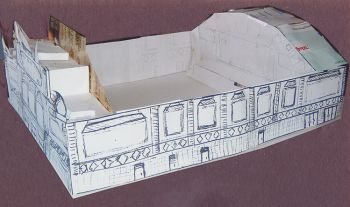
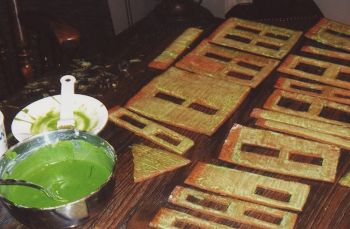
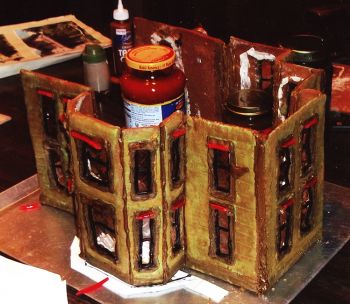
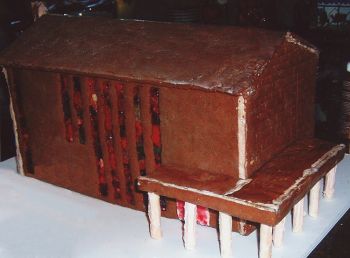
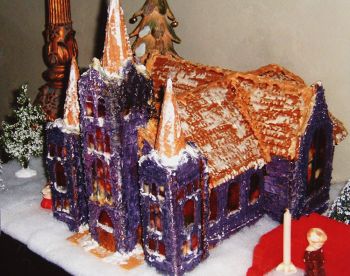
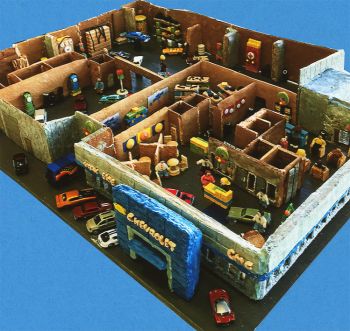
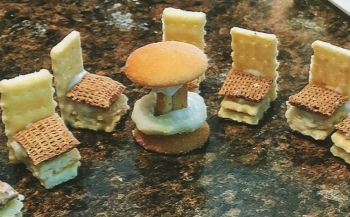
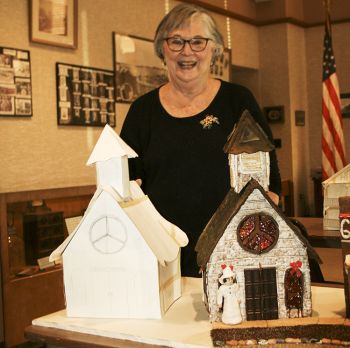
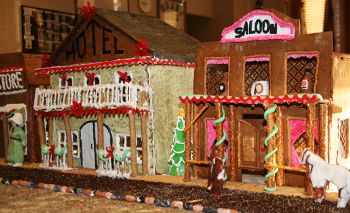

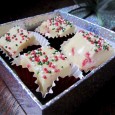


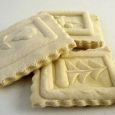
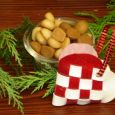


Comments